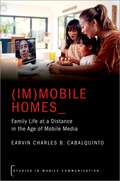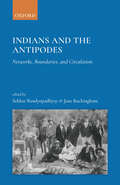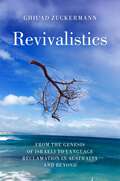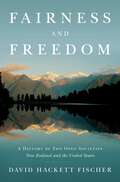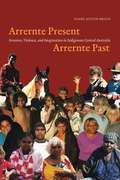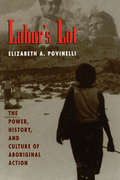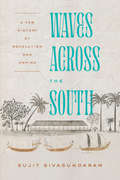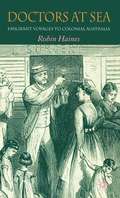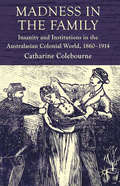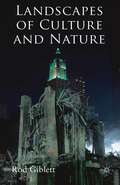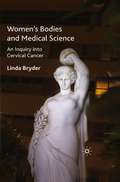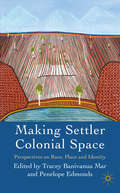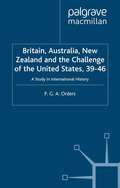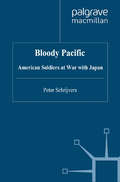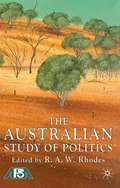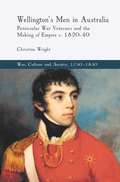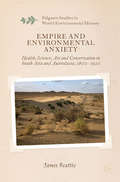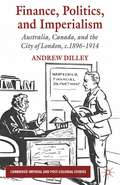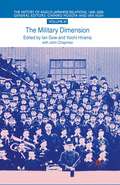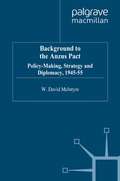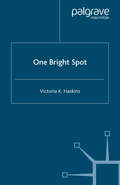- Table View
- List View
**Missing**: Family Life at a Distance in the Age of Mobile Media (Studies in Mobile Communication)
by Earvin Charles CabalquintoThe home has been on the forefront of rapid economic, political, social, and technological transformations for many individuals and families across the world. As a country reliant on the exportation of human labor to sustain its national economy, the Philippines exemplifies a valuable case study of the impacts of a globalized and networked society on the everyday dynamics of a transnational family arrangement. Despite ranking among the heaviest Internet users in the world, Filipino citizens are often left with no choice but to navigate digital and transnational environments orchestrated by the uneven distribution of both national and international resources and opportunities. (Im)mobile Homes investigates the role of smartphones, social media channels, and various mobile applications in forging and sustaining intimate ties among dispersed Filipino family members. Examining the digital lifeworlds of transnational Filipino family in Australia, this volume draws on rich ethnographic study to explore the benefits of digital communication as well as the tensions enabled by the influences of socio-cultural structures, socio-economic conditions, technological affordances, and institutional policies and processes on mobile practices. It portrays the physically distributed yet virtually connected nature of the transnational Filipino family through diverse contexts, such as observing family rituals, performing intimate care, and managing crises, and foregrounds their unique strategies in addressing the interruptions of connecting at a distance. Ultimately, this volume underscores how mobile practices of the transnational Filipino family negotiate the pre-existing and broader structural systems that (re)produce marginalization in a digital and global era. Enriched by moving stories of transnational families, (Im)mobile Homes offers a critical lens towards interrogating the possibilities and politics of a home from afar in the digital era.
Indians and the Antipodes: Networks, Boundaries, and Circulation
by Sekhar Bandyopadhyay Jane BuckinghamThe Indian diaspora in Australia and New Zealand represents a successful ethnic community making significant contributions to their host societies and economies. However, because of their small number—slightly more than half a million— they rarely find mention in the global literature on Indian diaspora. The present volume seeks to remedy this oversight. Charting the chequered 250-year-old history of both the ‘old’ and the ‘new’ diaspora in the antipodes, the chapters narrate the stories of labourers who journeyed under the pressure of colonial capital and post-war professional migrants who went in search of better opportunities. In the context of the ‘White Australia’ and ‘White New Zealand’ policies designed to stem the arrival of Asians in the early twentieth century, we read of the complex survival stratagems adopted by migrants to circumvent the stringent insular world view of the existing white settlers in these countries. Together with stories of the collective suffering and struggles of the diaspora, we are presented with stories of individual resilience, enterprise, and social mobility.
Revivalistics: From the Genesis of Israeli to Language Reclamation in Australia and Beyond
by Ghil'ad ZuckermannIn this book, Ghil'ad Zuckermann introduces revivalistics, a new trans-disciplinary field of enquiry surrounding language reclamation, revitalization, and reinvigoration. Applying lessons from the Hebrew revival of the late nineteenth and early twentieth centuries to contemporary endangered languages, Zuckermann takes readers along a fascinating and multifaceted journey into language revival and provides new insights into language genesis. Beginning with a critical analysis of Israeli-the language resulting from the Hebrew revival-Zuckermann's radical theory contradicts conventional accounts of the Hebrew revival and challenges the family tree model of historical linguistics. Revivalistics demonstrates how grammatical cross-fertilization with the revivalists' mother tongues is inevitable in the case of successful "revival languages." The second part of the book then applies these lessons from the Israeli language to revival movements in Australia and globally, describing the "why" and "how" of revivalistics. With examples from the Barngarla Aboriginal language of South Australia, Zuckermann proposes ethical, aesthetic, and utilitarian reasons for language revival and offers practical methods for reviving languages. Based on years of the author's research, fieldwork, and personal experience with language revivals all over the globe, Revivalistics offers ground-breaking theoretical and pragmatic contributions to the field of language reclamation, revitalization, and reinvigoration.
Fairness and Freedom: A History of Two Open Societies: New Zealand and the United States
by David Hackett FischerFairness and Freedom compares the history of two open societies--New Zealand and the United States--with much in common. Both have democratic polities, mixed-enterprise economies, individuated societies, pluralist cultures, and a deep concern for human rights and the rule of law. But all of these elements take different forms, because constellations of value are far apart. The dream of living free is America's Polaris; fairness and natural justice are New Zealand's Southern Cross. Fischer asks why these similar countries went different ways. Both were founded by English-speaking colonists, but at different times and with disparate purposes. They lived in the first and second British Empires, which operated in very different ways. Indians and Maori were important agents of change, but to different ends. On the American frontier and in New Zealand's Bush, material possibilities and moral choices were not the same. Fischer takes the same comparative approach to parallel processes of nation-building and immigration, women's rights and racial wrongs, reform causes and conservative responses, war-fighting and peace-making, and global engagement in our own time--with similar results. On another level, this book expands Fischer's past work on liberty and freedom. It is the first book to be published on the history of fairness. And it also poses new questions in the old tradition of history and moral philosophy. Is it possible to be both fair and free? In a vast array of evidence, Fischer finds that the strengths of these great values are needed to correct their weaknesses. As many societies seek to become more open--never twice in the same way, an understanding of our differences is the only path to peace.
Fairness and Freedom: A History of Two Open Societies: New Zealand and the United States
by David Hackett FischerFairness and Freedom compares the history of two open societies--New Zealand and the United States--with much in common. Both have democratic polities, mixed-enterprise economies, individuated societies, pluralist cultures, and a deep concern for human rights and the rule of law. But all of these elements take different forms, because constellations of value are far apart. The dream of living free is America's Polaris; fairness and natural justice are New Zealand's Southern Cross. Fischer asks why these similar countries went different ways. Both were founded by English-speaking colonists, but at different times and with disparate purposes. They lived in the first and second British Empires, which operated in very different ways. Indians and Maori were important agents of change, but to different ends. On the American frontier and in New Zealand's Bush, material possibilities and moral choices were not the same. Fischer takes the same comparative approach to parallel processes of nation-building and immigration, women's rights and racial wrongs, reform causes and conservative responses, war-fighting and peace-making, and global engagement in our own time--with similar results. On another level, this book expands Fischer's past work on liberty and freedom. It is the first book to be published on the history of fairness. And it also poses new questions in the old tradition of history and moral philosophy. Is it possible to be both fair and free? In a vast array of evidence, Fischer finds that the strengths of these great values are needed to correct their weaknesses. As many societies seek to become more open--never twice in the same way, an understanding of our differences is the only path to peace.
Arrernte Present, Arrernte Past: Invasion, Violence, and Imagination in Indigenous Central Australia
by Diane J. Austin-BroosThe Arrernte people of Central Australia first encountered Europeans in the 1860s as groups of explorers, pastoralists, missionaries, and laborers invaded their land. During that time the Arrernte were the subject of intense curiosity, and the earliest accounts of their lives, beliefs, and traditions were a seminal influence on European notions of the primitive. The first study to address the Arrernte’s contemporary situation, Arrernte Present, Arrernte Past also documents the immense sociocultural changes they have experienced over the past hundred years. Employing ethnographic and archival research, Diane Austin-Broos traces the history of the Arrernte as they have transitioned from a society of hunter-gatherers to members of the Hermannsburg Mission community to their present, marginalized position in the modern Australian economy. While she concludes that these wrenching structural shifts led to the violence that now marks Arrernte communities, she also brings to light the powerful acts of imagination that have sustained a continuing sense of Arrernte identity.
Arrernte Present, Arrernte Past: Invasion, Violence, and Imagination in Indigenous Central Australia (The\bush School Series In The Economics Of Public Policy)
by Diane J. Austin-BroosThe Arrernte people of Central Australia first encountered Europeans in the 1860s as groups of explorers, pastoralists, missionaries, and laborers invaded their land. During that time the Arrernte were the subject of intense curiosity, and the earliest accounts of their lives, beliefs, and traditions were a seminal influence on European notions of the primitive. The first study to address the Arrernte’s contemporary situation, Arrernte Present, Arrernte Past also documents the immense sociocultural changes they have experienced over the past hundred years. Employing ethnographic and archival research, Diane Austin-Broos traces the history of the Arrernte as they have transitioned from a society of hunter-gatherers to members of the Hermannsburg Mission community to their present, marginalized position in the modern Australian economy. While she concludes that these wrenching structural shifts led to the violence that now marks Arrernte communities, she also brings to light the powerful acts of imagination that have sustained a continuing sense of Arrernte identity.
Arrernte Present, Arrernte Past: Invasion, Violence, and Imagination in Indigenous Central Australia (The\bush School Series In The Economics Of Public Policy)
by Diane J. Austin-BroosThe Arrernte people of Central Australia first encountered Europeans in the 1860s as groups of explorers, pastoralists, missionaries, and laborers invaded their land. During that time the Arrernte were the subject of intense curiosity, and the earliest accounts of their lives, beliefs, and traditions were a seminal influence on European notions of the primitive. The first study to address the Arrernte’s contemporary situation, Arrernte Present, Arrernte Past also documents the immense sociocultural changes they have experienced over the past hundred years. Employing ethnographic and archival research, Diane Austin-Broos traces the history of the Arrernte as they have transitioned from a society of hunter-gatherers to members of the Hermannsburg Mission community to their present, marginalized position in the modern Australian economy. While she concludes that these wrenching structural shifts led to the violence that now marks Arrernte communities, she also brings to light the powerful acts of imagination that have sustained a continuing sense of Arrernte identity.
Labor's Lot: The Power, History, and Culture of Aboriginal Action
by Elizabeth A. PovinelliHow does an Aboriginal community see itself, its work, and its place on the land? Elizabeth Povinelli goes to the Belyuen community of northern Australia to show how it draws from deep connections between labor, language, and the landscape. Her findings challenge Western notions of "productive labor" and longstanding ideas about the role of culture in subsistence economies. In Labor's Lot, Povinelli shows how everyday activities shape Aboriginal identity and provide cultural meaning. She focuses on the Belyuen women's interactions with the countryside and on Belyuen conflicts with the Australian government over control of local land. Her analysis raises serious questions about the validity of Western theories about labor and culture and their impact on Aboriginal society. Povinelli's focus on women's activities provides an important counterpoint to recent works centering on male roles in hunter-gatherer societies. Her unique "cultural economy" approach overcomes the dichotomy between the two standard approaches to these studies. Labor's Lot will engage anyone interested in indigenous peoples or in the relationship between culture and economy in contemporary social practice.
Waves Across the South: A New History of Revolution and Empire
by Sujit SivasundaramThis is a story of tides and coastlines, winds and waves, islands and beaches. It is also a retelling of indigenous creativity, agency, and resistance in the face of unprecedented globalization and violence. Waves Across the South shifts the narrative of the Age of Revolutions and the origins of the British Empire; it foregrounds a vast southern zone that ranges from the Arabian Sea and southwest Indian Ocean across to the Bay of Bengal, and onward to the South Pacific and the Tasman Sea. As the empires of the Dutch, French, and especially the British reached across these regions, they faced a surge of revolutionary sentiment. Long-standing venerable Eurasian empires, established patterns of trade and commerce, and indigenous practice also served as a context for this transformative era. In addition to bringing long-ignored people and events to the fore, Sujit Sivasundaram opens the door to new and necessary conversations about environmental history, the consequences of historical violence, the legacies of empire, the extraction of resources, and the indigenous futures that Western imperialism cut short. The result is nothing less than a bold new way of understanding our global past, one that also helps us think afresh about our shared future.
Waves Across the South: A New History of Revolution and Empire
by Sujit SivasundaramThis is a story of tides and coastlines, winds and waves, islands and beaches. It is also a retelling of indigenous creativity, agency, and resistance in the face of unprecedented globalization and violence. Waves Across the South shifts the narrative of the Age of Revolutions and the origins of the British Empire; it foregrounds a vast southern zone that ranges from the Arabian Sea and southwest Indian Ocean across to the Bay of Bengal, and onward to the South Pacific and the Tasman Sea. As the empires of the Dutch, French, and especially the British reached across these regions, they faced a surge of revolutionary sentiment. Long-standing venerable Eurasian empires, established patterns of trade and commerce, and indigenous practice also served as a context for this transformative era. In addition to bringing long-ignored people and events to the fore, Sujit Sivasundaram opens the door to new and necessary conversations about environmental history, the consequences of historical violence, the legacies of empire, the extraction of resources, and the indigenous futures that Western imperialism cut short. The result is nothing less than a bold new way of understanding our global past, one that also helps us think afresh about our shared future.
Doctors at Sea: Emigrant Voyages to Colonial Australia
by R. HainesIn this engaging tale of movement from one hemisphere to another, we see doctors at work attending to their often odious and demanding duties at sea, in quarantine, and after arrival. The book shows, in graphic detail, just why a few notorious voyages suffered tragic loss of life in the absence of competent supervision. Its emphasis, however, is on demonstrating the extent to which the professionalism of the majority of surgeon superintendents, even on ships where childhood epidemics raged, led to the extraordinary saving of life on the Australian route in the Victorian era.
Madness in the Family: Insanity and Institutions in the Australasian Colonial World, 1860–1914
by C. ColeborneMadness in the Family explores how colonial families coped with insanity through a trans-colonial study of the relationships between families and public colonial hospitals for the insane in New South Wales, Victoria, Queensland and New Zealand between 1860 and 1914.
Landscapes of Culture and Nature
by R. GiblettA bold and exciting exploration of the relationship and interactions between humans, the human landscape and the earth, looking at a diverse range of case studies from the nineteenth-century city to the Asian tsunami and Hurricane Katrina.
Women's Bodies and Medical Science: An Inquiry into Cervical Cancer (Science, Technology and Medicine in Modern History)
by L. BryderAn analysis of a scandal involving a doctor accused of allowing a number of women to develop cervical cancer from carcinoma in situ as part of an experiment he had been conducting since the 1960s into conservative treatment of the disease, to more broadly explore dramatic changes in medical history in the second half of the twentieth century.
Making Settler Colonial Space: Perspectives on Race, Place and Identity
by Tracey Banivanua Mar P. EdmondsCharts the making of colonial spaces in settler colonies of the Pacific Rim during the last two centuries. Contributions journey through time, place and region, and piece together interwoven but discrete studies that illuminate transnational and local experiences - violent, ideological, and cultural - that produced settler-colonial space.
Britain, Australia, New Zealand and the Challenge of the United States, 1939–46: A Study in International History (Studies in Military and Strategic History)
by P. OrdersThis book relates the development of Anglo-Australian-New Zealand relations during and immediately after the second world war to the role of the United States in the South-west Pacific. Based on the results of comprehensive multi-archival research, the book highlights the extent of American-Commonwealth rivalry in the region and following the crisis of late 1941 and early 1942 demonstrates how the reforging of imperial links was shaped by the expansion of American power in Pacific areas south of the equator. It provides an important and timely reassessment of the economic, political and strategic factors that led Britain, Australia and New Zealand to conclude that the postwar affairs of the South-west Pacific should be dominated by the British Empire.
Bloody Pacific: American Soldiers at War with Japan
by P. SchrijversBased on countless diaries and letters, Schrijvers recounts American GIs' experiences in Asia and the Pacific. From the daunting spaces of the China-India theatre to the fortress islands of Iwo Jima and Okinawa, he brings to life their struggle with suffocating wilderness, devastating diseases, and Japanese soldiers who preferred death over life.
The Australian Study of Politics
by R. RhodesThe Australian Study of Politics provides the first comprehensive reference book on the history of the study of politics in Australia, whether described as political studies or political science. It focuses on Australia and on developments since WWII, also exploring the historical roots of each major subfield.
Wellington's Men in Australia: Peninsular War Veterans and the Making of Empire c.1820-40 (War, Culture and Society, 1750 –1850)
by C. WrightAn exploration of the little-known yet historically important emigration of British army officers to the Australian colonies in the aftermath of the Napoleonic Wars. The book looks at the significant impact they made at a time of great colonial expansion, particularly in new south Wales with its transition from a convict colony to a free society.
Empire and Environmental Anxiety: Health, Science, Art and Conservation in South Asia and Australasia, 1800-1920 (Palgrave Studies in World Environmental History)
by J. BeattieA new interpretation of imperialism and environmental change, and the anxieties imperialism generated through environmental transformation and interaction with unknown landscapes. Tying together South Asia and Australasia, this book demonstrates how environmental anxieties led to increasing state resource management, conservation, and urban reform.
Finance, Politics, and Imperialism: Australia, Canada, and the City of London, c.1896-1914 (Cambridge Imperial and Post-Colonial Studies)
by A. DilleyAndrew Dilley offers a major new study of financial dependence, examining the connections this dependence forged between the City and political life in Edwardian Australia and Canada, mediated by ideas of political economy. In doing so he reconstructs the occasionally imperialistic politic of finance which pervaded the British World at this time.
The Military Dimension: Volume III: The Military Dimension (The History of Anglo-Japanese Relations, 1600-2000)
by I. Gow Y. Hirama J. ChapmanThe five volumes in the series entitled The History of Anglo-Japanese Relations, 1600-2000 explore the history of the relationship between Britain and Japan from the first contacts of the early 1600s through to the end of the twentieth century. This volume presents 19 original essays by Japanese, British and other international historians and covers the evolving military relationship from the 19th century through to the end of the 20th century. The main focus is on the interwar period when both military establishments shifted from collaboration to conflict, as well as wartime issues such as the treatment of POWs seen from both sides, the Occupation of Japan and war crimes trials.
Background to the Anzus Pact: Policy-Makers, Strategy and Diplomacy, 1945-55 (Cambridge Imperial and Post-Colonial Studies)
by W. McIntyreThis book contains a detailed analysis of American, British, Australian and New Zealand strategic planning during the early years of the Cold War, including their plans for fighting World War III in the Middle East, and the diplomatic negotiations leading up to the security treaty signed by Australia, New Zealand and the United States in 1951. It considers the problems raised by Britain's exclusion from Anzus and the subsequent creation of Seato and the British Commonwealth Far East Strategic Reserve in Malaya.
One Bright Spot
by V. HaskinsFor every Aboriginal child taken away by the state governments in Australia, there was at least one white family intimately involved in their life. One Bright Spot is about one of these families - about 'Ming', a Sydney wife and mother who hired Aboriginal domestic servants in the 20s and 30s, and became an activist against the Stolen Generations policy. Her story, reconstructed by her great-granddaughter, tells of a remarkable, yet forgotten, shared history.
